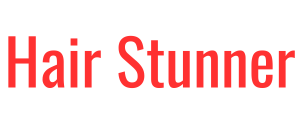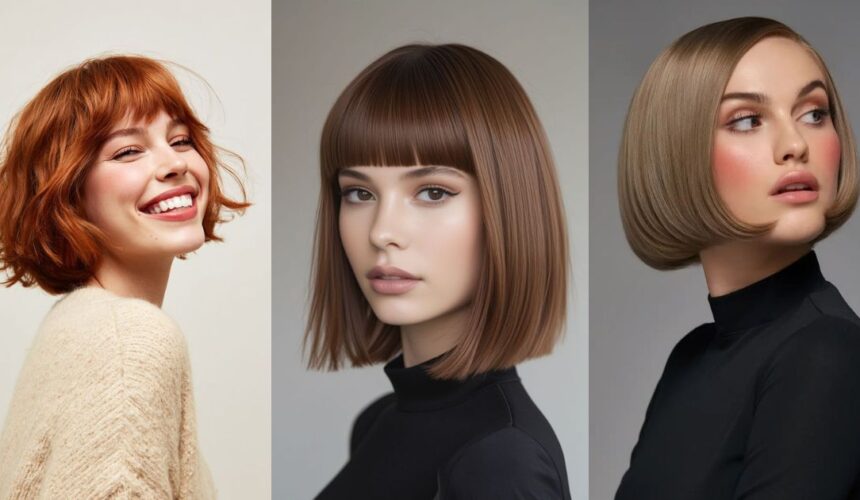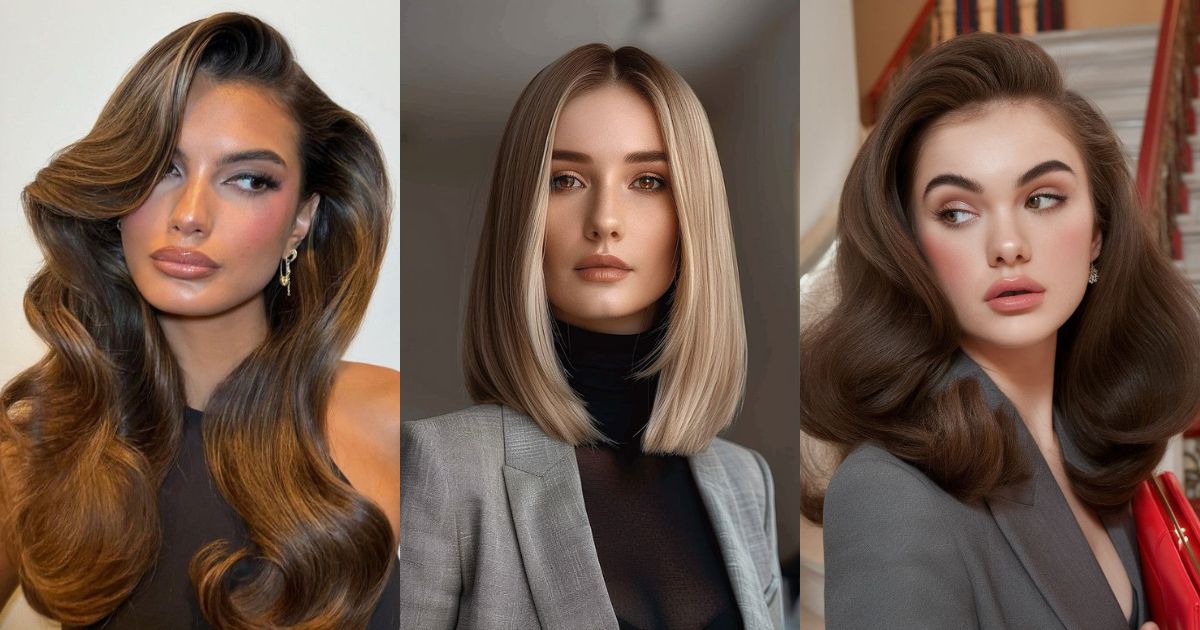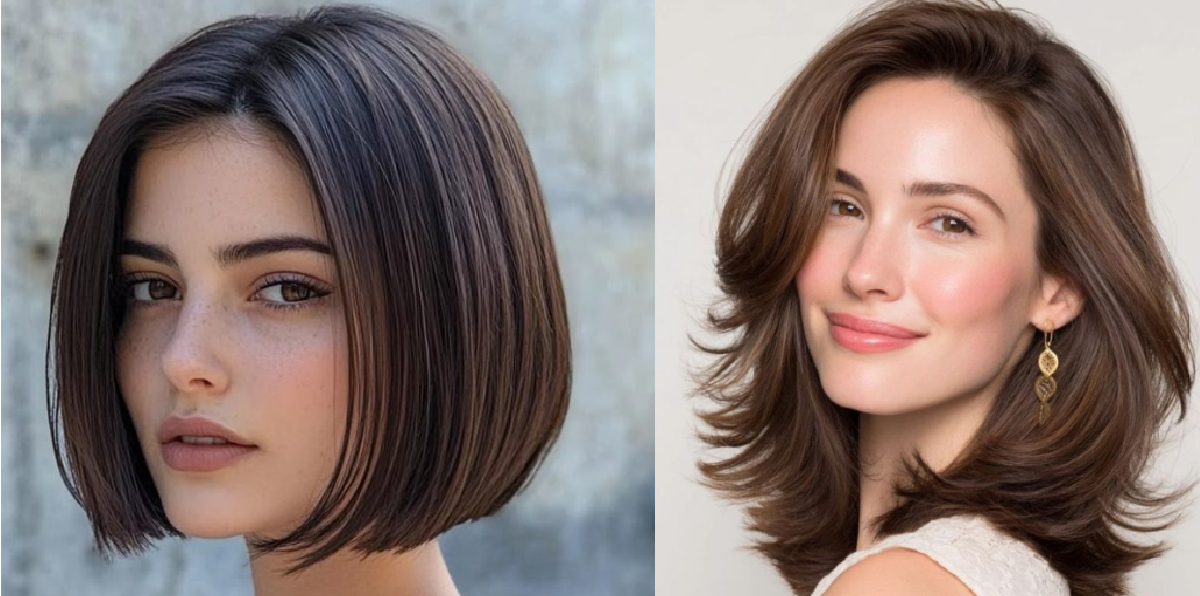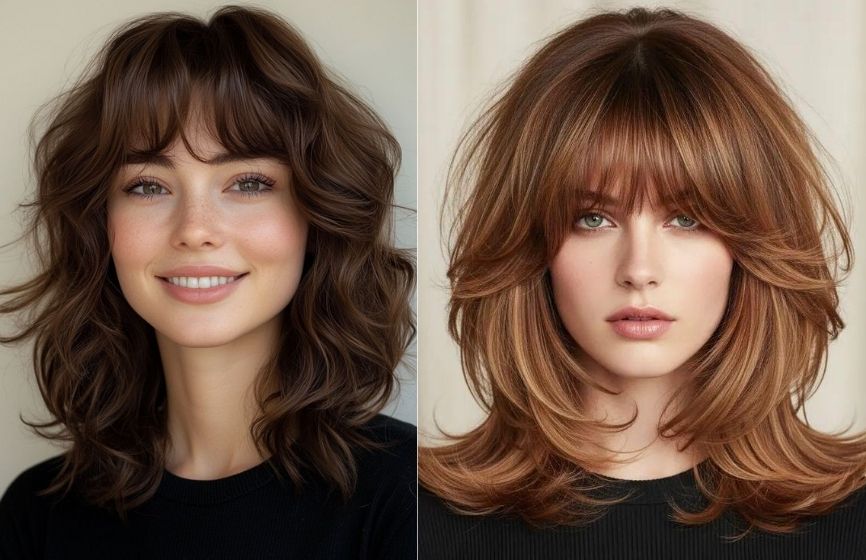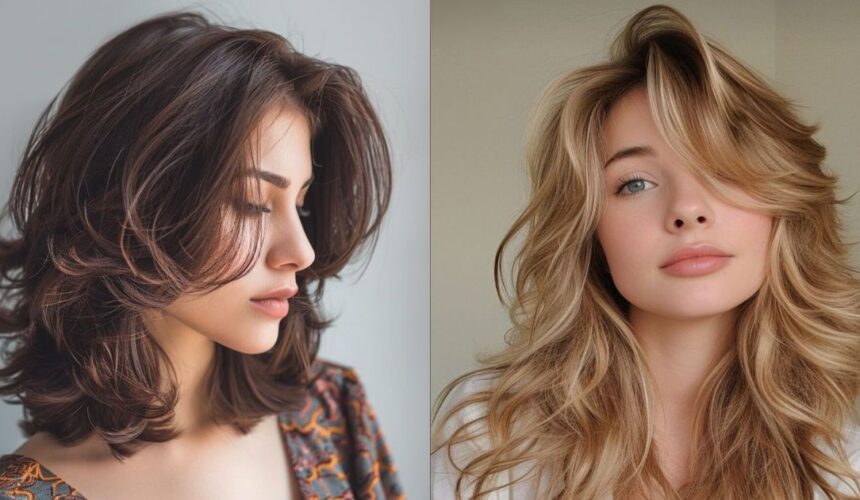
Medium-Length Layered Haircuts for Volume and Movement
Medium-length layered haircuts are the sweet spot between short and long hair, offering versatility, volume, and endless styling options. The layers create movement that prevents the hair from looking flat, while the length gives you the freedom to experiment with waves, curls, or sleek styles.
Whether you have fine strands that need a boost or thick hair that benefits from some weight removal, these cuts are flattering for all textures and face shapes. The beauty of this style lies in its ability to be both practical for everyday wear and glamorous for special occasions.
Why Medium-Length Layers Work for Everyone
This haircut works beautifully across different hair types because layers add depth and texture. For fine hair, they create the illusion of fuller, thicker strands by introducing lightness and bounce. For thick hair, they help manage volume, reducing heaviness without sacrificing style.
The mid-length base makes it easy to keep hair healthy, as trims can remove split ends without drastically changing the shape. This length also frames the face in a way that enhances facial features without overwhelming them.
Many hairstylists note that layers offer a timeless look. They can be adapted into choppy, feathered, or blended finishes, depending on your personal style. If you are seeking a modern, low-maintenance haircut that still allows for creativity, this style is worth considering.
Types of Layers for Volume and Movement
Soft Layers
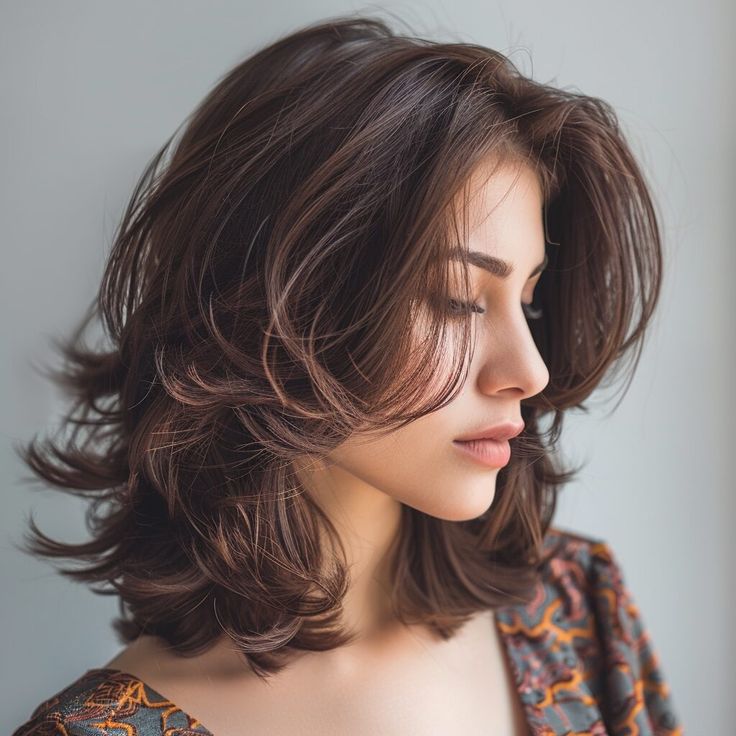
Soft layers are subtle and gentle, designed to add just enough texture to enhance the hair without creating a dramatic change in shape. They work especially well for those who want a polished, smooth finish while maintaining most of the hair’s length intact. Because the difference between the layers is minimal, the overall look remains sleek and refined.
This type of layering is perfect for straight or slightly wavy hair, where the layers can move naturally without overpowering the style. Soft layers also make it easy to switch between formal and casual looks, as they adapt well to different styling methods.
Choppy Layers
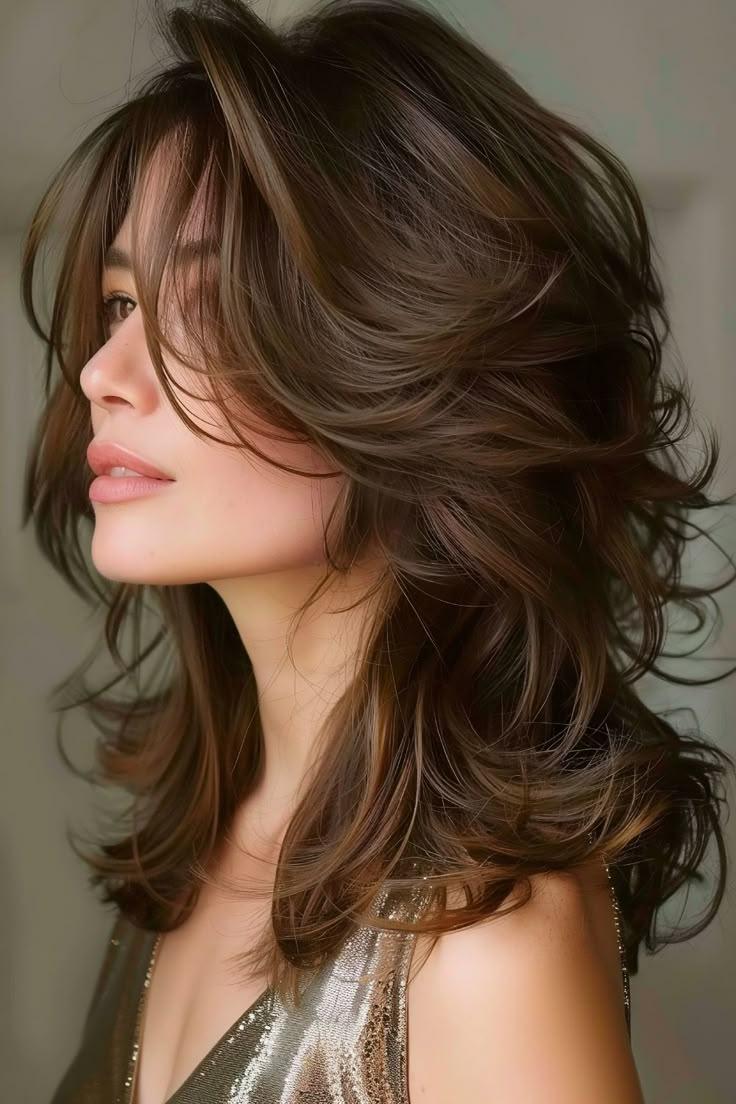
Choppy layers have a more defined and noticeable difference between lengths, which gives the hair a textured and lively feel. This type of layering is often used to create a modern, slightly undone look that complements tousled waves or air-dried hair.
The uneven lengths catch the light differently, adding depth and dimension throughout the cut. Choppy layers are especially flattering on medium hair because they break up the weight and create movement without making the style feel too structured. They are ideal for anyone who prefers a relaxed, effortless vibe with plenty of personality.
Graduated Layers
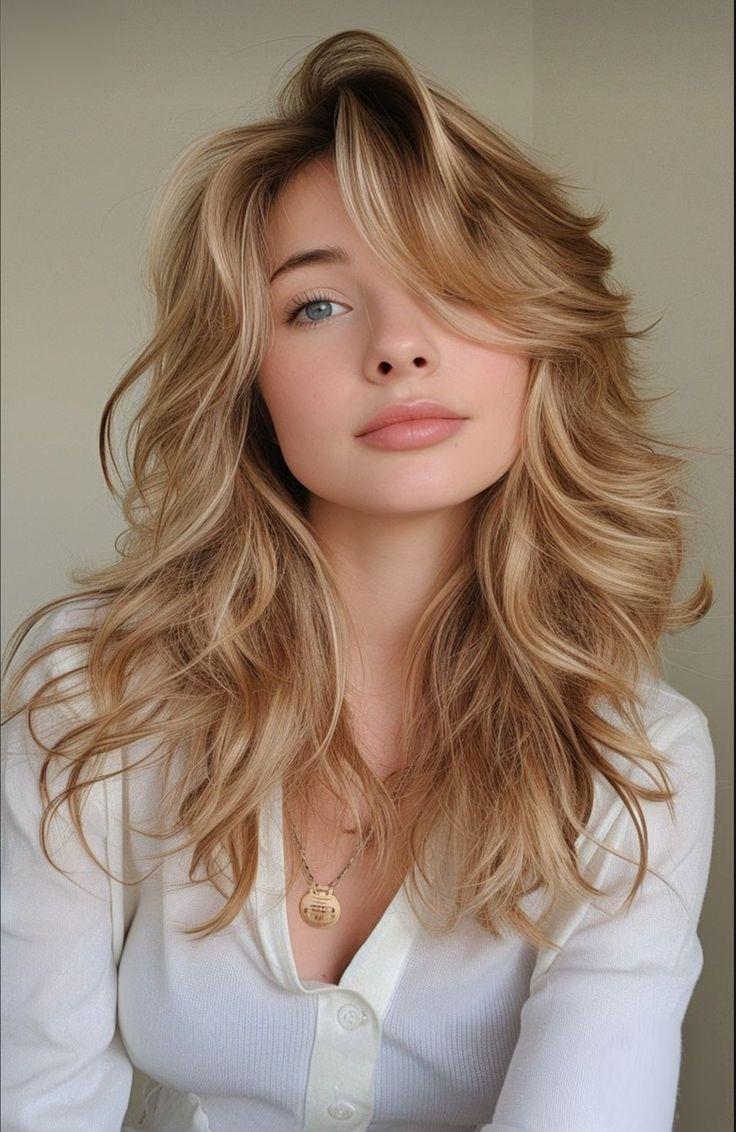
Graduated layers gradually increase in length from the top of the hair down to the ends, creating a soft, cascading effect. This technique allows the layers to blend smoothly into one another while maintaining a balanced shape. It is a popular choice for those who want movement and flow without sacrificing fullness at the bottom.
The graduation helps keep volume at the crown while allowing the hair to taper gracefully toward the ends. This style works well with both straight and wavy textures, and it can be styled sleek for a professional finish or loosely curled for a more romantic feel.
Face-Framing Layers
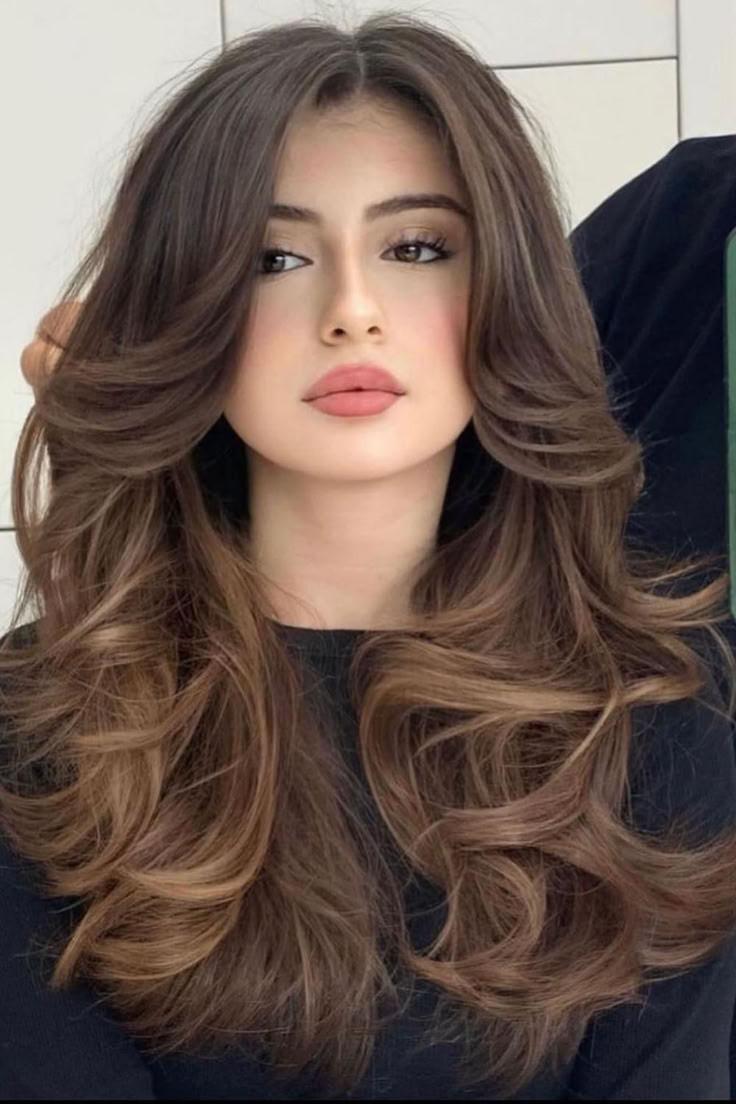
Face-framing layers are cut to enhance the natural features of the face, drawing attention to the eyes, cheekbones, jawline, or chin. These layers are typically shorter at the front and gradually blend into the rest of the hair, creating a soft, flattering frame around the face.
They work well with almost any hair texture and can be tailored to suit different face shapes. For example, shorter layers around the cheekbones can make the face appear more lifted, while longer layers near the chin can add balance to sharper features. This type of layering also makes it easier to style the hair away from the face, creating an open and approachable look.
How Layers Create Volume and Movement
Volume and movement come from the strategic placement of shorter sections within the haircut. Layers break up the hair’s weight, preventing it from lying flat against the head.
When styled with a round brush or curling wand, these shorter pieces lift from the roots and form a flow through the mid-lengths and ends. Movement is especially noticeable when walking or turning your head, giving your hair a lively, airy quality.
Even naturally straight hair gains dimension from layers, while wavy or curly textures get a more defined and bouncy appearance. Layers can even help enhance natural curl patterns by removing excess bulk.
Styling Options for Every Occasion
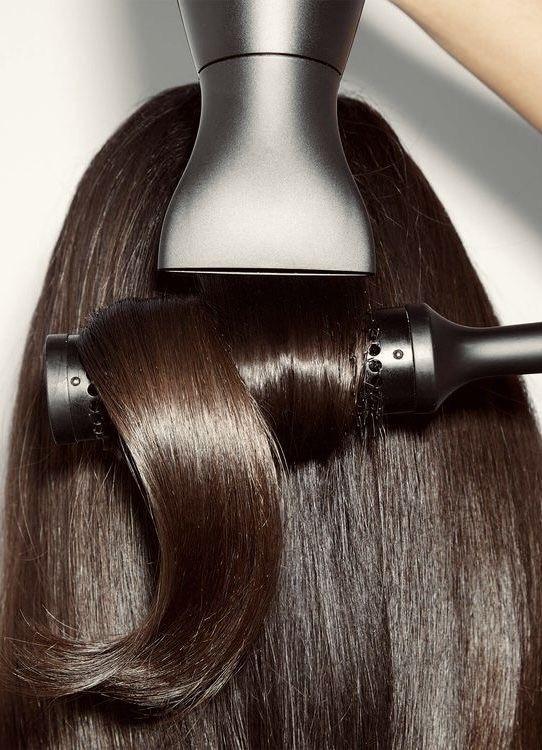
One reason this haircut remains so popular is its flexibility. On casual days, you can let it air dry for a relaxed, effortless look. For work or professional events, you can smooth it with a straightener for a polished finish. For evenings out, adding loose curls or waves gives extra glamour to your hair.
You can also play with parting. A middle part creates a balanced, symmetrical frame for your face, while a deep side part adds drama and volume on one side. Hair accessories such as clips, headbands, or scarves can also alter the overall vibe.
Medium-Length Layers for Fine Hair
If your hair tends to fall limp, this cut is a game-changer. The added layers create a dimension that tricks the eye into seeing more volume. Keeping the layers soft and blended prevents the ends from looking too thin. You might also consider adding subtle highlights or balayage to enhance the layered effect, as light and shadow create more depth.
Fine hair benefits from lightweight styling products that enhance volume without weighing down the strands. Volumizing mousse, root lift sprays, and blow-drying with a round brush are simple techniques to keep your layers bouncy.
Medium-Length Layers for Thick Hair
Thick hair can often feel heavy and unmanageable at medium length. Layers help remove bulk, making the hair easier to style and more comfortable to wear down. Texturizing shears can create airiness without altering the hair length.
For thick, wavy hair, layers help break up dense waves, as they fall more uniformly, reducing the triangle effect where hair is wide at the bottom.
A smoothing serum or lightweight oil can keep thick layers sleek while preventing frizz. For an edgier look, ask your stylist to add a few face-framing pieces that are slightly shorter than the rest of the layers.
Adding Bangs for a Fresh Twist
Pairing bangs with shoulder-length layers can uplift the vibe of your haircut. Curtain bangs blend seamlessly into layers, creating a retro-inspired softness. Blunt bangs add a bold, fashion-forward edge, while wispy bangs keep the look airy and casual.
The combination of layers and bangs is making a strong comeback, especially with modern blowouts and soft, undone textures. This pairing works well for both youthful and sophisticated looks.
Playing with Texture
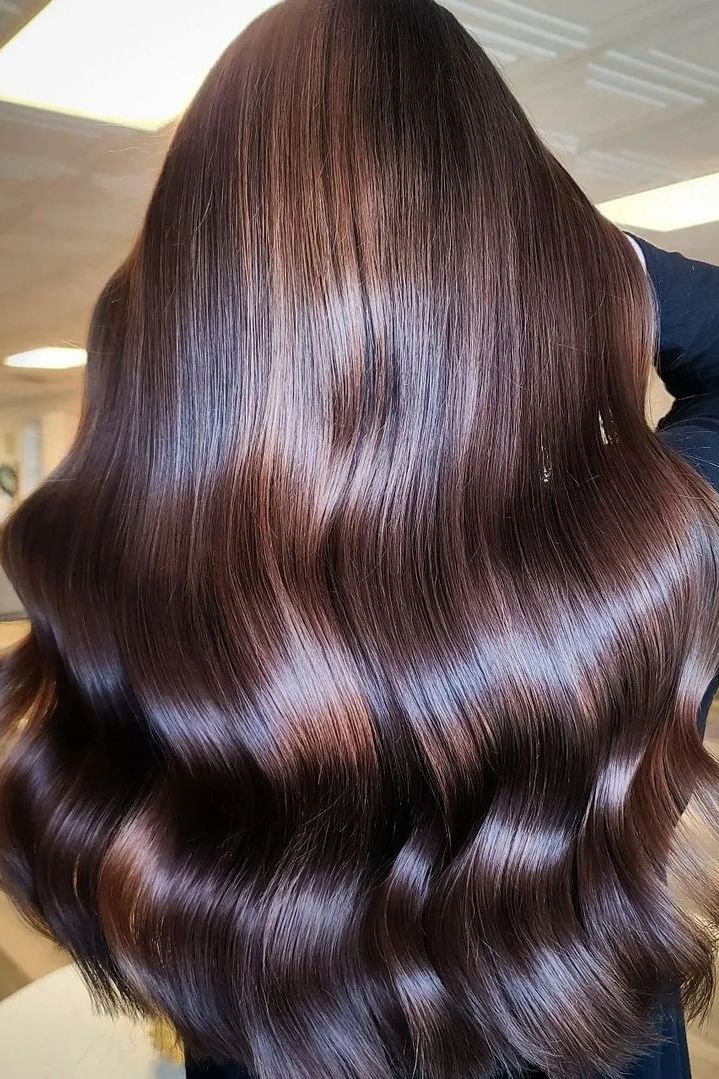
Texture can transform the same layered haircut into countless different styles. Loose waves create a beachy, relaxed feel. Smooth, straight strands give off a chic, minimalist vibe. Soft curls can make your hair appear romantic and feminine.
Heat-free methods, such as braiding damp hair overnight or using foam rollers, are great for adding texture without damage. Sea salt sprays or texturizing mists can enhance natural movement for a more lived-in look.
Color That Complements Layers
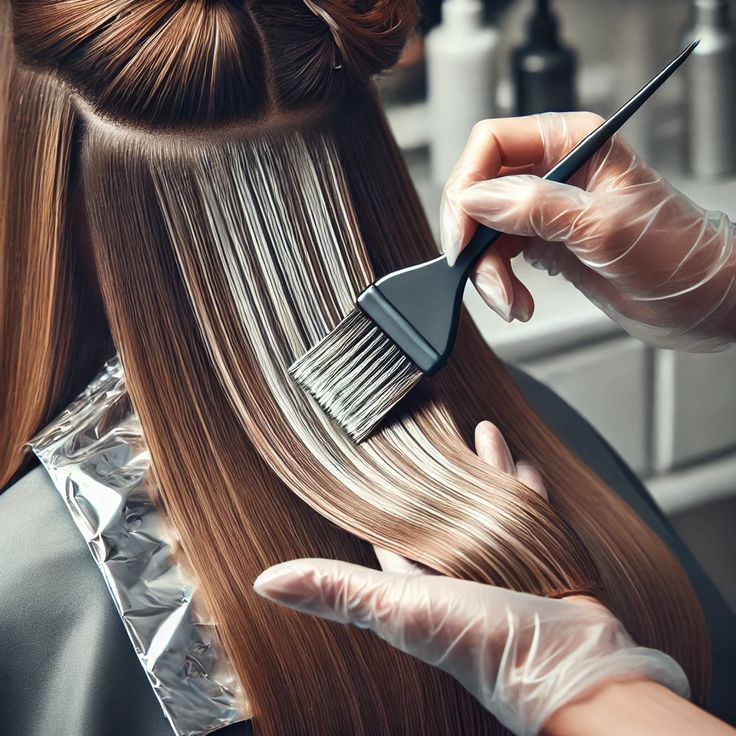
Layers are the perfect canvas for hair color techniques that add depth and beauty to your hair. Balayage, ombre, and highlights work especially well with layered hair, as they emphasize the different lengths and dimensions. Ash brown, caramel, honey blonde, and warm chestnut tones are popular choices that suit this length.
Strategically placed highlights near the face can brighten your complexion, while lowlights add depth and richness to the overall style.
Low-Maintenance Appeal
Shoulder-length layered cuts offer a balance between style and upkeep. They typically require trims every six to eight weeks to maintain the shape, but they do not demand daily heat styling. Even when growing out, the layered structure helps the hair maintain its shape without awkward transitions.
For those with busy lifestyles, this is a practical option that still feels stylish and current. A simple refresh with a curling wand or blow-dry can revive the look in minutes.
How to Ask Your Stylist
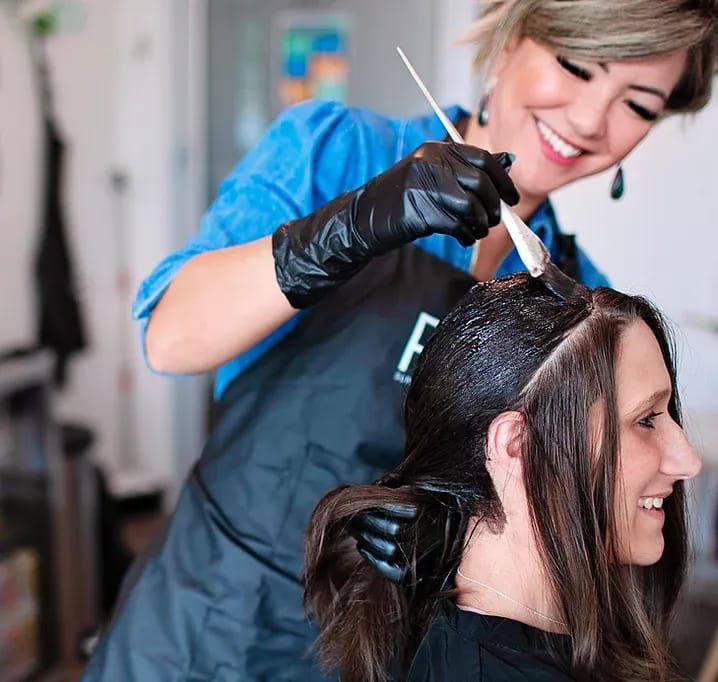
When requesting this haircut, it helps to bring reference photos that match your hair texture and desired outcome. Ask for soft, blended layers starting around the collarbone or slightly above, depending on the scale of movement you want. Discuss whether you prefer a more feathered finish or a blunt, modern edge.
If you have specific styling habits, such as wearing your hair straight most days, your stylist can tailor the layering to suit that preference.
Medium-Length Layers in Current Trends
Medium-length layers are trending due to their adaptability for modern lifestyles. The style works for both minimalist, sleek looks and more textured, lived-in waves. Influencers and celebrities alike have chosen this cut, proving its versatility across different fashion aesthetics.
The resurgence of blowout styling has also contributed to its popularity. With layered movement, a good blowout can last several days, looking effortlessly chic.
Final Thoughts
Medium-length layered haircuts strike the perfect balance between versatility, style, and manageability. They enhance natural volume, create graceful movement, and offer endless possibilities for personalization through texture, bangs, and color. Whether your hair is fine, thick, straight, or curly, this length and style adapts beautifully, making it a timeless choice.
If you want a haircut that feels fresh without being high maintenance, consider medium-length layers as your next salon visit inspiration. They are flattering, modern, and adaptable to your unique style, ensuring you always have a look that moves with you.
